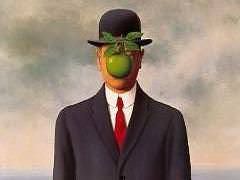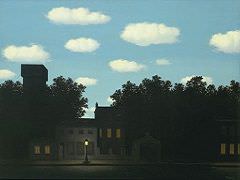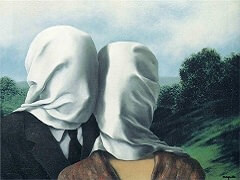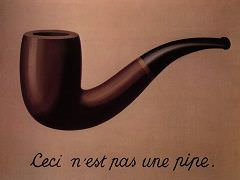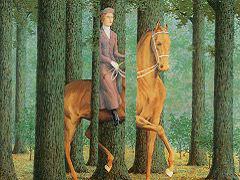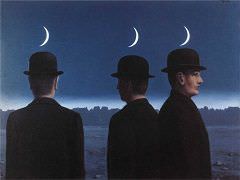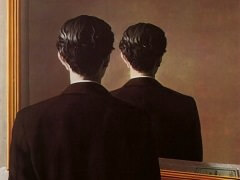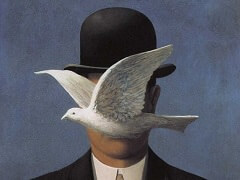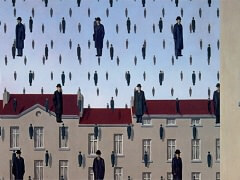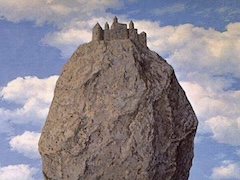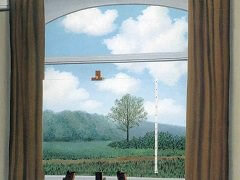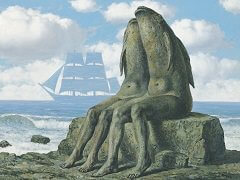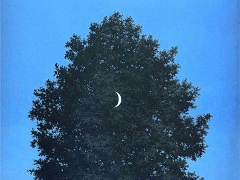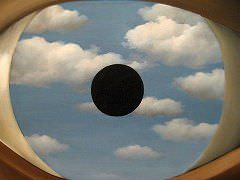The Birth of the Idol, 1926 by Rene Magritte
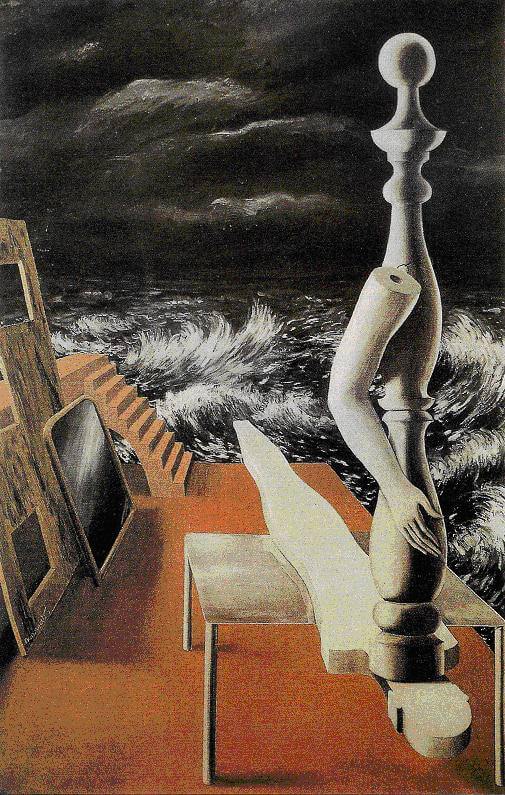
Magritte repeatedly depicted the jockey and especially the bilboquet, and often added the form of the mannequin or dummy - as in The Birth of the Idol - which had been first used in painting by Giorgio de Chirico. The Birth of the Idol is, in fact, a striking example of the impact De Chirico still had on painters more than ten years after his innovations.
In the storm above a tumultuous sea depicted here, Magritte displays an expressive power which hardly ever occurs later. Already there are such elements as the blind staircase and doors with openings in them, while the idol rises in the oppressive scene like an unattractive bilboquet-dummy from the cut-out silhouette of a human being.
The Lost Jockey and The Birth of the Idol indicate well how fertile and inventive Magritte's imagination was in 1926. Subject to changing moods and emotional stress now that he had found his way as though by revelation after much hard searching, Magritte also experienced that nervous unrest and excitement typical of the enthusiasm and industry of a young talent. Something of this can be traced in these two works of 1926, probably against his wish. It does not occur again after 1929.

